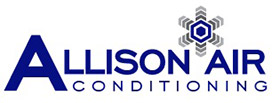Humidity can dramatically drop as cold weather sets in. A common problem that results from this decrease in humidity is dry winter skin. Heating and air conditioning expert Allison discusses the importance of controlling indoor humidity during the winter season.

Ideal Indoor Relative Humidity Levels
Comfortable indoor humidity levels vary from one home to the next, but usually fall within 35% to 50%, relative to outdoor temperatures of 10 to 50 degrees. Low relative humidity levels can cause problems such as tight, itchy, flaky skin, especially around the joints. Chapped lips are also common, as are flare-ups of other skin problems such as eczema and acne, and in extreme cases, deep skin cracks. Dry air can also cause dryness of the nasal passages, which can lead to discomfort and nosebleeds. If you’re having these problems, you should take steps to control your home’s indoor humidity.
Controlling Indoor Humidity
Care should be taken when adjusting indoor humidity levels, as high humidity levels present their own set of problems. Too much humidity can trigger asthma and allergies, for instance, as well as promote mold and mildew growth. It can also cause visible condensation to form on walls and windows, and lead to wrinkles on books and wallpaper. Humid indoor spaces also tend to be muggy and uncomfortable.
There are many ways to increase indoor humidity during dry months, such as indoor plants and standalone humidifiers. However, to be able to more accurately control the humidity in your house, whole-home humidifiers and dehumidifiers are still the best option. They allow year-round indoor humidity control, with options that can be integrated into existing heating and cooling systems. Thermostats that control humidity and temperature on a single panel are also available.
Allison Can Help
To learn more about indoor humidity solutions and other heating and air conditioning options, call Allison today at (951) 736-1101. You can also fill out our contact form to schedule an appointment. We offer financing options for new HVAC installations.


